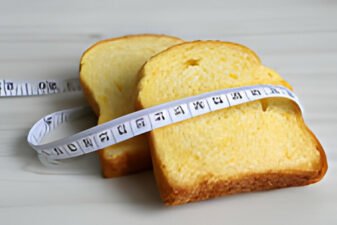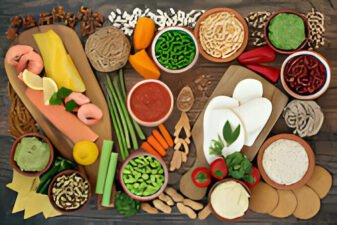The new carbohydrate-classification system known as the Glycemic Index rates the carbohydrate quality in foods according to its immediate effect on blood glucose level. Thus carbs that break down quickly into glucose during digestion, causing a rapid rise in glucose levels, have a High GI value. Those carbs that break down more slowly, are given an Intermediate or Low GI value.
Designed For Diabetes Treatment
Invented in 1981 by David Jenkins and Thomas Wolever of the University of Toronto, as a tool for the treatment of diabetics who need to maintain stable blood sugar,the Glycemic Index (GI) has now replaced the older method of classifying carbohydrates according to their “simple” or “complex” chemical structure.
GI Shows Us Which Foods Are Best/Worst For Blood Sugar Levels
- In order to “use” food, our body first converts it into glucose. This glucose then enters our bloodstream and can be used as needed.
- We have a safety mechanism to ensure our glucose level remains relatively balanced. It works like this. If levels fall too low, the brain makes us feel hungry, so we eat food that is turned into glucose. If levels rise too high, the brain tells the pancreas to release insulin into the blood to “mop up” excess glucose.
- So far so good. However, the human body was designed in the Stone Age – long before the existence of modern super-refined carb-foods. Some of these super-refined carb-foods are converted into glucose very fast – too fast for comfort. As a result, our blood-glucose shoots up (called a “sugar-spike”). This fools the body into releasing too much insulin.
- This mops up too much glucose and our level falls so low that the brain makes us feel hungry again!
- Thus, not only do we overeat, but also we can experience excessively high levels of insulin which can over time cause health problems.
- The glycemic index helps us to understand which foods are best and worst for controlling our blood glucose levels.
GI Diet Is Useful For Weight Loss
Calorie-controlled weight loss plans based on the glycemic index are healthier than both low-carb and low-fat diets. Unlike carb-restricted plans like South Beach Diet or Dr Atkins New Diet Revolution, GI diets allow you to eat plenty of unrefined carbs, many of which are rich in fiber as well as micronutrients such as vitamins and minerals. Unlike low-fat diets, GI eating plans recommend moderate amounts of good quality fats, such as polyunsaturated essential fatty acids like omega-3, as well as monounsaturated fats from vegetables, nuts and seeds. Research now shows that these fats and oils actually improve our health and assist weight loss.
The GI Index Should Not Be Followed Rigidly
Use the GI Index as a guide, rather than a rigid rule-book. Point is, low-GI foods also include several items (like candy and cookies) which are neither healthy nor good for calorie control. These foods have low GI values because of their high fat content, and fat slows down digestion. Proper GI Diets make allowances for this and only recommend healthy low-GI foods.
GI Diets Improve Food Quality
A century ago, most of our food came straight from the farm to the dinner table. Lack of refrigeration and knowledge of food chemistry meant that most food remained in its original state. Not very convenient, perhaps, by comparison with today’s ‘ready-to-eat’ foods, but much healthier. Carbohydrates in particular contained much more of the original fiber and wheat germ than today’s carbs. As a result, the human body had to do most of the processing and digesting itself. Which meant it stayed full for longer. Nowadays, food is much more heavily processed before it arrives on our plate. Most of the fiber and natural grain is removed, so we digest it much quicker. And the faster we digest food, the sooner we get hungry and the more we eat. The GI Diet method aims to promote higher consumption of unrefined carbs that require longer digestion times due to their unprocessed state. This can only improve food quality, and control overeating. In this way, GI diets might help tackle the recent huge increase in obesity, as well as the rise in metabolic disorders like pre-diabetes, type 2 diabetesand insulin insensitivity. Other conditions related to over-consumption of refined carbs include IBS and diverticulosis, both of which should be helped by a return to more natural foods.
Please Note
The expressions “blood-glucose” and “blood-sugar” refer to the same thing.











